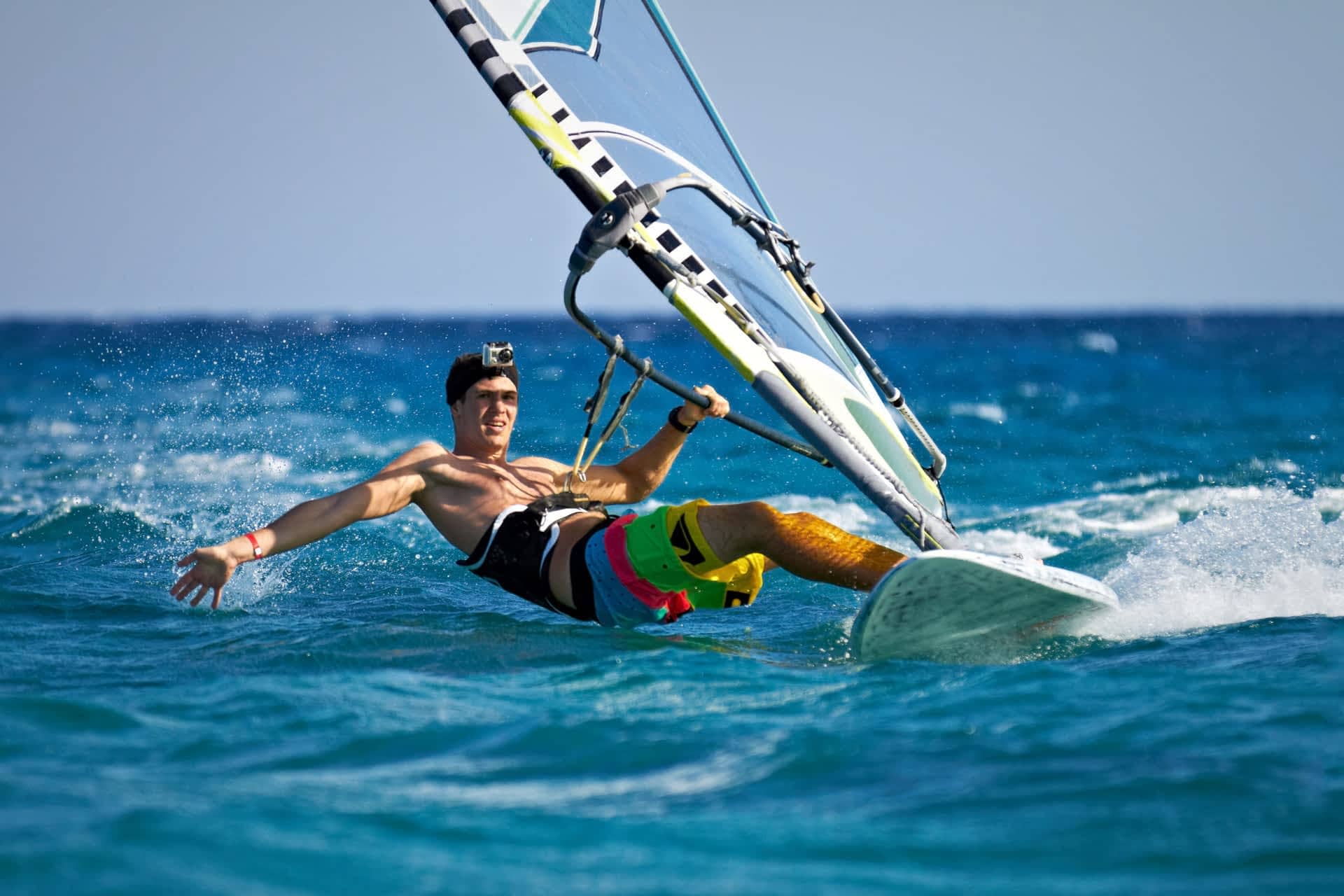The best advice I can give to an aspiring windsurfer is - get an experienced instructor to teach you how to windsurf. Even if you have never set your foot on the board, one thing is clear - under the supervision of a person who knows what he’s doing, you will surely start enjoying windsurfing right away. If you stubbornly try to learn everything by yourself, you will also make it in the end but on account of losing precious time.
Remember, no two waves are ever the same, so for a windsurfer, the playing field is constantly changing. This tips will help you so you don’t start out as a ‘tabula rasa’ - a blank board! And even later, you should constantly strive to improve your technique, correct all those bad habits each of us has and get back to basics every now and then…
When you get more skilled, getting into harness and foot-straps you will be looking for 15 to 20-knot winds. Anything above that, you are too good to be looking for tips in this guide
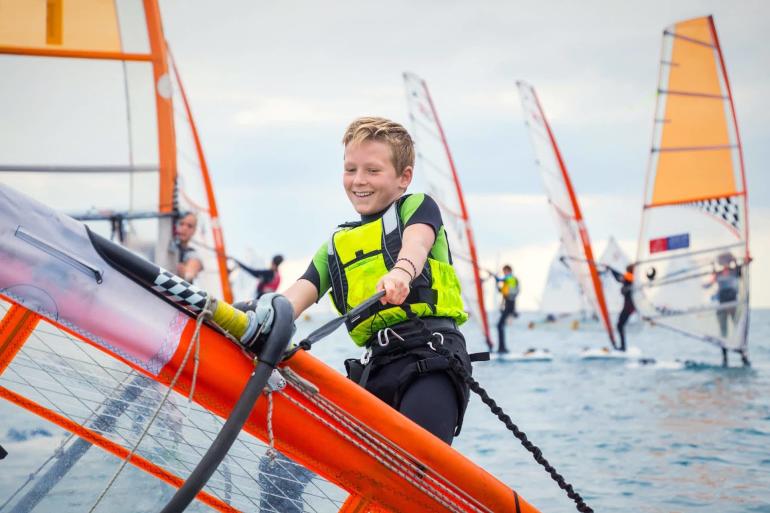 Photo: YanLev
Photo: YanLevLesson number one: get yourself a decent instructor. You'll be getting a grip on basics in no time! Use your body weight and gravity more than the strength of your arms. If kids can do it, so can you!
#1 Get an experienced instructor and do as he says!
You will remember 90 percent of your first lesson for the rest of your life. Uninspiring practice drill on dry land will soon turn to windy&sea joy. Learning how to windsurf is not complicated, but mastering it will take some time. How long exactly? You might become self-sufficient on board in just a few hours under instructor’s supervision. Often, just one weekend might give you all the basics. You’ll need a lot of time on board, but as you improve - windsurfing gets better!
#2 Know your wind direction
Long story short - you can't sail directly upwind. Always make sure you know which direction the wind is coming from. Understand the very basics of wind direction and remember - you don’t need to look for a strong wind, but rather for a steady wind. And what about the wind speed? Well, it depends on your skill and your style. Beginners might do best with 7-10 knot winds paired with basic learning gear. When you get more skilled, getting into harness and foot-straps you will be looking for 15 to 20-knot winds. Anything above that, you are too good to be looking for tips in this guide.
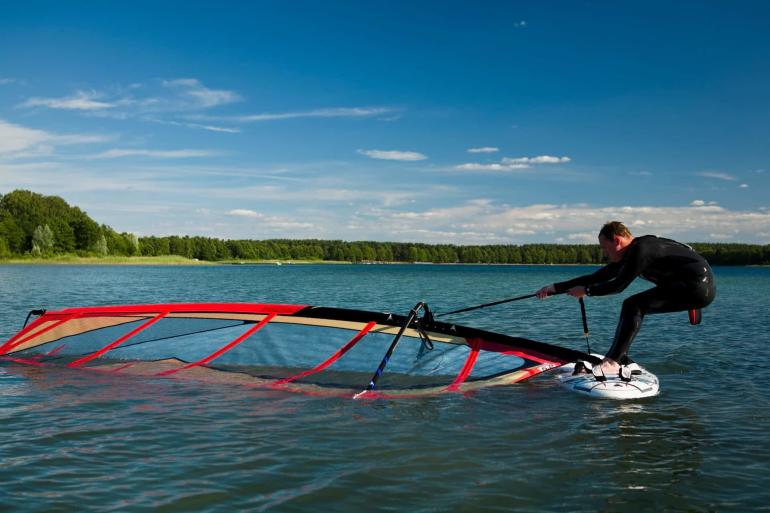 Photo: Tomasz Nieweglowski
Photo: Tomasz NieweglowskiPick up some skill level to effortlessly pull the sail out of the water. Bigger ones are more difficult to take care of, but you'll be using smaller ones at first anyway
#3 Small sail is the way to go. But...
Starting with a small sail is a safe option for rookies. Setting your foot on the board for the first time, you might want to keep your speed down. But, soon speed is what will crave and after a few hours on board, you’ll be looking for a larger sail area. Try a few options until you find something you'll be comfortable with. Really big sails are also harder to control, and you need to pick up some skill level to effortlessly pull them out of the water. After a few tries, you'll want to experiment and find the right sail size that ensures you get some acceleration, but at the same time aren’t too heavy for you. When you are a noob, just ask the instructor what’s the best surface area for your body weight and strength level.
Just one weekend might give you all the basics. You’ll need a lot of time on board, but as you improve - windsurfing gets better!
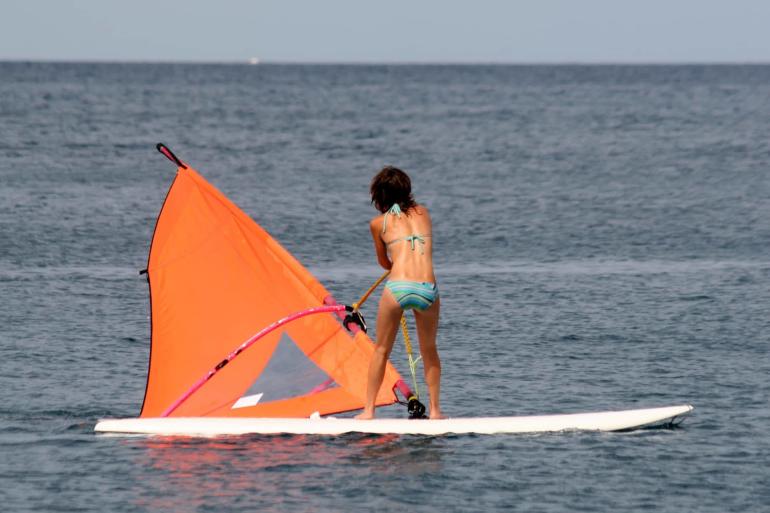 Photo: AAR Studio
Photo: AAR StudioIf you get pulled off balance, or the wind shifts, just go with the flow and toss yourself into the water. It's fun and harmless
#4 Just fall down a few times, it’s fun!
It's fun and harmless to fall in the water. If you get pulled off balance, or the wind shifts, just go with the flow: toss yourself into the water, cool off, climb back on and sail some more!
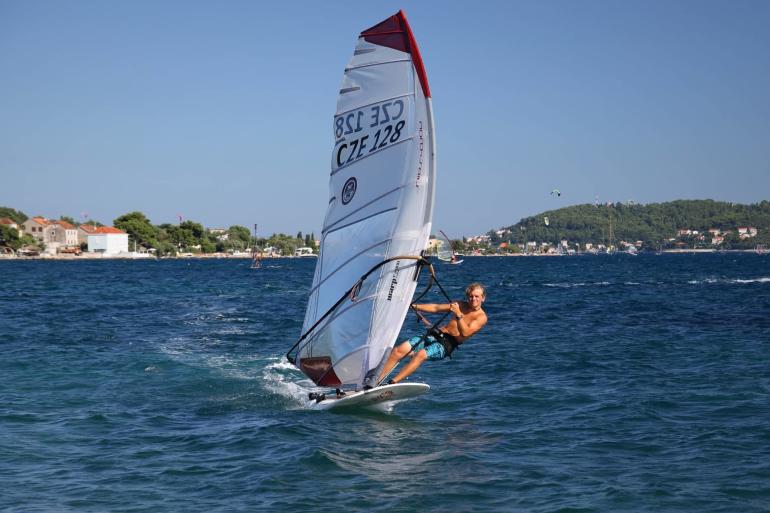 Photo: vesnushka
Photo: vesnushkaYou can learn a lot over a single weekend, but don't expect to be just like this guy anytime soon. Windsurfing takes time
#5 Afraid of a strong wind? Gravity is your friend, use it
Starting to be more comfortable with speed that larger sails provide, you’ll notice that pulling on the sail all the time will tire out even the strongest hands quickly. Use your body weight and gravity more than the strength of your arms. Keep your arms extended but not flexed, and lean back to counterbalance the larger sail.
